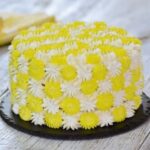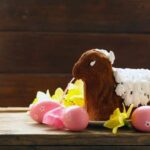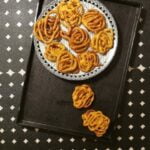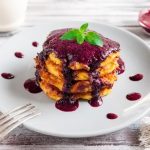Frosting plays a crucial role in the world of cake decorating, and its significance cannot be overstated. Not only does frosting add visual appeal to a cake, but it also enhances the overall taste and texture. A well-executed frosting can elevate a simple cake into a work of art and bring joy to any occasion. Whether you are a beginner or an experienced baker, understanding how to make frosting is an essential skill that will unlock endless creative possibilities.
When it comes to cake decorating, frosting acts as the canvas on which your design will come to life. It provides a smooth base for intricate piping work, creates dimension with various textures, and holds decorative elements in place. But frosting isn’t just about aesthetics – it’s equally important in ensuring that every bite of your cake is moist, flavorful, and satisfying.
Different types of frostings have their own unique characteristics and suitability for specific cake designs. From traditional buttercream to tangy cream cheese or indulgent ganache, each type offers its own flavor profile and texture. Understanding these differences allows you to choose the perfect frosting for your desired outcome.
Whether you’re aiming for a classic look or experimenting with contemporary designs, knowing how to make homemade frosting puts you in control of the final product. With the right ingredients and techniques at your disposal, you can create personalized flavors that cater to individual preferences while achieving stunning aesthetics.
So why settle for store-bought when you can take your cake decorating skills to the next level with homemade frosting? Let’s dive into this comprehensive guide on making frosting for cake decorating.
Understanding Different Types of Frostings
Buttercream Frosting
One of the most widely used types of frostings in cake decorating is buttercream frosting. This classic frosting is made with a combination of butter, powdered sugar, vanilla extract, and milk or cream. Buttercream frosting is known for its smooth and creamy texture, making it ideal for spreading and piping onto cakes.
It can be easily flavored and colored to match your desired cake design. Buttercream frosting is versatile and can be used for various cake styles, from simple birthday cakes to intricate wedding cakes.
Cream Cheese Frosting
Cream cheese frosting offers a tangy and slightly sweet flavor that pairs well with many cake flavors, especially carrot cake and red velvet cake. Made with cream cheese, butter, powdered sugar, and vanilla extract, this frosting provides a rich and creamy texture. Cream cheese frosting is not as stable as buttercream when it comes to piping intricate designs but works superbly as a smooth layer of icing or filling between cake layers.
Ganache
Ganache is another popular choice for both filling and frosting cakes. It is made by combining chocolate and heavy cream to create a glossy glaze-like consistency that hardens slightly when cooled.
Ganache can be poured over the top of a cake for a sleek finish or whipped to create a fluffy texture suitable for spreading or piping. This type of frosting adds an indulgent taste to any cake and can be enhanced with different flavors such as coffee or liqueurs.
It’s essential to choose the right type of frosting for your cake design based on its characteristics. If you’re looking for stability in intricate designs and piping work, buttercream may be your best bet.
On the other hand, if you want a tangy flavor that complements certain cakes perfectly or desire an elegant glossy finish, cream cheese frosting or ganache may be the way to go. Experimenting with different frosting types can help you discover new flavors and textures that will elevate your cake decorating skills.
Essential Ingredients for Frosting
Frosting is a key element in cake decorating, and understanding the essential ingredients needed to make frosting is crucial for achieving the perfect texture and flavor. Each ingredient plays a specific role in creating a smooth, creamy consistency and enhancing the overall taste of the frosting. Here are some staple ingredients you will need when making frosting:
- Butter: Butter is one of the main ingredients in frosting and provides richness and flavor. It also contributes to the smoothness and creaminess of the frosting. It’s important to use unsalted butter to have better control over the salt content in your recipe.
- Sugar: Sugar is what sweetens the frosting and brings out its flavor. Powdered sugar or confectioners’ sugar is commonly used because it dissolves easily and creates a smoother texture. Adjusting the amount of sugar used can help you achieve your desired level of sweetness.
- Vanilla Extract: Vanilla extract adds depth and enhances the overall taste of the frosting. It provides a pleasant aroma and complements many other flavors well. You can also experiment with different extracts, such as almond or mint, to create unique flavor combinations.
- Milk or Cream: Liquid ingredients like milk or cream help thin out the frosting for easier spreading consistency. They also add moisture to keep your cake moist and prevent it from drying out. The amount of liquid used can be adjusted depending on how thick or thin you want your frosting to be.
- Salt: While salt may seem like an odd addition, it actually helps balance and enhance flavors in frostings, especially those that are overwhelmingly sweet. A pinch of salt can elevate the overall taste of your frosting without making it salty.
By understanding these essential ingredients and their functions in frosting, you’ll be able to adjust them according to your preferences while still achieving delicious results. Don’t be afraid to experiment with different flavors and ratios until you find your perfect homemade frosting recipe.
Step-by-Step Guide
Basic Buttercream Frosting is a versatile and popular choice for cake decorating. It is easy to make and can be customized for different flavors and colors. Follow this step-by-step guide to create a delicious buttercream frosting that will elevate your cake decorations.
Ingredients
| Ingredient | Quantity |
|---|---|
| Unsalted butter, at room temperature | 1 cup (2 sticks) |
| Powdered sugar | 4 cups |
| Vanilla extract | 1 teaspoon |
| Milk or heavy cream | 2-4 tablespoons |
Instructions
- Step 1: In a large mixing bowl, beat the unsalted butter until creamy and smooth using an electric mixer on medium speed.
- Step 2: Gradually add the powdered sugar, about a cup at a time, while continuing to beat on low speed. Scrap the sides of the bowl occasionally to ensure everything is well mixed.
- Step 3: Once all the powdered sugar has been added, increase the mixer speed to medium-high. Beat for about 2-3 minutes until the mixture becomes light and fluffy.
- Step 4: Add vanilla extract and mix well to incorporate it into the frosting.
- Step 5: Gradually add milk or heavy cream, one tablespoon at a time, while beating on low speed. The amount of liquid needed may vary depending on desired consistency. For a thicker frosting, use less liquid; for a thinner frosting, use more liquid.
- Step 6: Increase the mixer speed to medium-high and beat for an additional 1-2 minutes until the frosting is smooth and creamy. Scrape the sides of the bowl occasionally to ensure all ingredients are well incorporated.
Your basic buttercream frosting is now ready to be used for cake decorating. It can be piped onto cakes or spread evenly using a spatula. Experiment with different piping tips and techniques to create beautiful designs.
Remember to store any leftover frosting in an airtight container in the refrigerator. When ready to use again, let it come to room temperature and give it a good stir before applying it to your cakes.
By following this step-by-step guide, you will have a delicious and versatile buttercream frosting that can elevate your cake decorations. Experiment with different flavors and colors by adding extracts or food coloring for endless possibilities. Get creative and enjoy the process of making your very own homemade frosting.
Adding Flavors and Colors to Frostings
When it comes to cake decorating, adding flavors and colors to frostings can take your creations to the next level. Not only does it enhance the taste, but it also allows you to create visually appealing designs that match your desired theme or occasion. There are several methods you can use to incorporate flavors and colors into your frostings, ranging from simple additions to more complex techniques.
One of the simplest ways to add flavor to your frosting is by using extracts or essences. Vanilla extract is a popular choice, but you can also experiment with other flavors such as almond, lemon, or peppermint depending on your preference. Another option is incorporating fruit purees or jams into your frosting for a burst of fruity goodness. For a more indulgent touch, consider mixing in melted chocolate or cocoa powder for a rich and decadent flavor profile.
When it comes to coloring frostings, there are numerous options available. One common method is using food coloring gels or dyes, which come in a wide range of vibrant shades. These gels offer intense color payoff without altering the consistency of the frosting. If you prefer natural alternatives, you can try using powdered freeze-dried fruits or vegetables for coloring. For example, beet powder can give a beautiful pink hue while matcha powder creates a natural green color.
To achieve unique effects and designs, piped or swirled frostings can be used. This involves separating small amounts of frosting into different bowls and tinting each with different colors before transferring them into piping bags fitted with various tips. As you pipe the frosting onto the cake, different shades will blend together creating beautiful gradients or eye-catching patterns.
Incorporating flavors and colors into your frostings allows you to personalize your cakes and turn them into works of art. Whether you want an elegant monochrome design or a vibrant rainbow creation, experimenting with different flavor combinations and coloring techniques will help you achieve the desired effect. So go ahead and let your creativity run wild by adding that extra touch of flavor and color to your frosting.
Tips and Tricks for Achieving the Perfect Consistency
Understanding Consistency in Frosting
When it comes to cake decorating, achieving the perfect consistency of frosting is crucial. The consistency determines how easy it is to work with the frosting and ultimately affects the overall appearance of the decorated cake. There are three main consistencies to consider: stiff, medium, and thin.
Stiff consistency is ideal for creating intricate designs and decorations that hold their shape. Medium consistency works well for general piping and outlining borders. Thin consistency is used for coating the entire cake or drizzling decorations.
Adjusting Consistency with Liquid and Dry Ingredients
To achieve the desired consistency, it is important to know how to make adjustments using liquid and dry ingredients. If your frosting is too thick or stiff, you can gradually add small amounts of milk, cream, or water until it reaches the desired consistency.
On the other hand, if your frosting is too runny or thin, you can add powdered sugar gradually until it thickens up. It’s important to make these adjustments slowly and in small increments to avoid overcorrecting.
Troubleshooting Common Consistency Issues
Achieving the perfect consistency can sometimes be challenging even for experienced bakers. If you find that your frosting is too thin after adding liquid ingredients, try refrigerating it for a short period of time before using it again as chilling can help thicken it up. On the other hand, if your frosting becomes too thick after adding powdered sugar, you can add a small amount of liquid at a time until it loosens up to the desired texture.
Additionally, weather conditions such as humidity can affect the consistency of frosting. In hot and humid climates, frostings may become softer and more difficult to work with than in cooler conditions. To combat this issue, you can refrigerate the frosting briefly before using or keep a bowl of ice nearby while working with buttercream frosting to help maintain the desired consistency.
By understanding and implementing these tips and tricks for achieving the perfect consistency, you will be able to ensure that your frosting is not only delicious but also easy to work with, allowing you to create beautiful cake decorations with confidence.
Decorating Techniques Using Frosting
When it comes to cake decorating, the possibilities are endless with the right frosting. Frosting not only adds a delicious layer of sweetness to your cake, but it also serves as a canvas for creativity. In this section, we will explore various decorating techniques that can be achieved using frosting.
One popular technique is piping, which involves using a piping bag fitted with different tips to create intricate designs on the cake’s surface. The most commonly used tips for piping include round tips for creating dots or beads, star tips for making rosettes and borders, and leaf tips for adding foliage or texture. By simply changing the tip and adjusting the pressure applied to the bag, you can create unique patterns and shapes.
Another technique that adds an elegant touch to any cake is creating rosettes. This involves swirling frosting in a circular motion using a star tip to form beautiful flower-shaped designs. Rosettes can be made by starting from the center of the cake and moving outward in a continuous motion until you reach the desired size. You can create multiple layers of rosettes or combine them with other design elements for more complexity.
Borders are another way to enhance the appearance of your cake using frosting. Borders act as frames around the edges of cakes and provide a finishing touch. The most common border styles include shells, scrolls, zig-zags, or braided designs. They can be created using different tips and by controlling the speed at which you pipe while maintaining consistent pressure.
To give your cake a more personalized touch, you can also experiment with different textures and finishes. For example, you can use an offset spatula to create smooth surfaces or add texture by gently pressing forks or combs into the frosting. Additionally, incorporating edible decorations such as sprinkles, edible flowers, or fondant cutouts can further enhance your design.
By experimenting with these techniques and combining them creatively, you can achieve stunning results that will impress your friends and family. Remember to have fun, be patient, and practice your skills. With time, you will become more confident in your ability to create unique cake designs using frosting as your medium.
| Piping Tip | Pattern/Design |
|---|---|
| Round tip | Dots, beads |
| Star tip | Rosettes, borders |
| Leaf tip | Foliage, texture |
Common Mistakes to Avoid When Making Frosting
When it comes to making frosting for cake decorating, there are a few common mistakes that beginners should be aware of and avoid. These mistakes can result in a frosting that is too runny, too thick, or lacks flavor. By learning from these common pitfalls, you can ensure that your homemade frosting turns out beautifully every time.
One common mistake is not properly creaming the butter and sugar together. The process of creaming helps incorporate air into the mixture, resulting in a lighter and fluffier frosting. To achieve this, make sure your butter is at room temperature before starting. Beat the butter on medium speed until it becomes soft and creamy, then gradually add in the sugar while continuing to beat until light and fluffy.
Another mistake to avoid is adding too much liquid too quickly. While some recipes call for liquid such as milk or heavy cream to be added to the frosting, it’s important to do so slowly and in small increments.
This allows you to control the consistency of the frosting and prevent it from becoming too thin or watery. If you accidentally add too much liquid, you can thicken the frosting by gradually incorporating more powdered sugar until the desired consistency is achieved.
Lastly, one common mistake when making frosting is not properly measuring ingredients. Accuracy is key when it comes to achieving the right balance of flavors and texture in your frosting. Use measuring cups and spoons specifically designed for dry or wet ingredients to ensure precise measurements. Additionally, make sure your ingredients are fresh and high quality for the best results.
By being mindful of these common mistakes, you can avoid potential pitfalls when making frosting for cake decorating. With practice and attention to detail, you’ll soon be creating beautiful cakes with flawless homemade frostings that are visually stunning and deliciously flavored.
Conclusion
In conclusion, homemade frosting can truly elevate your cake decorations and take them to the next level. Throughout this article, we have explored the importance of frosting in cake decorating and how it can make a significant difference in both the appearance and taste of a cake. We have also delved into different types of frostings, essential ingredients, step-by-step recipes, flavor customization, achieving the perfect consistency, decorating techniques, and common mistakes to avoid.
By making your own frosting at home, you have the opportunity to showcase your creativity and add a personalized touch to your cake designs. Homemade frostings allow for endless possibilities when it comes to flavors and colors. You can experiment with different combinations and techniques to match the theme or occasion of your cake.
Furthermore, mastering the correct consistency of frosting is crucial for achieving professional-looking results. With practice and a little guidance from our article, you will be able to overcome common challenges and troubleshoot any issues that may arise.
So why settle for store-bought frosting when you can create your own masterpieces? Elevate your cake decorations by trying your hand at making homemade frosting. Not only will you impress your guests with visually stunning cakes but they will also savor every bite with delight thanks to the scrumptious flavors created by your very own hands. Happy cake decorating.
Frequently Asked Questions
How to make a cake frosting at home?
Making cake frosting at home is a relatively simple process that allows you to customize the taste and texture according to your preferences. To start, gather the necessary ingredients such as butter, powdered sugar, vanilla extract, and milk or cream. In a mixing bowl, beat the butter until creamy and gradually add in the powdered sugar while continuing to mix.
Then, incorporate the vanilla extract for flavoring and a small amount of milk or cream to achieve the desired consistency. Adjust the thickness by adding more powdered sugar or thin it out with additional liquid if needed. This basic recipe can serve as a foundation for different variations like chocolate frosting by incorporating cocoa powder or adding flavors like citrus zest or extracts.
What kind of frosting do you use for cake decorating?
When it comes to cake decorating, there are several types of frosting that can be used depending on personal preference and the desired effect. Buttercream frosting is one popular option that works well for both beginners and professionals alike. It is made by beating together butter, powdered sugar, vanilla extract, and sometimes milk or cream for a smoother consistency.
Buttercream can easily be colored with food coloring for vibrant decorative elements and can also be piped into various designs using different tips. Another commonly used frosting is fondant, which provides a smooth finish on cakes suitable for more intricate decorations.
How to make icing for a cake for beginners?
For beginners looking to make icing for their cake, a simple recipe using powdered sugar is an excellent choice. Start by sifting the powdered sugar into a mixing bowl to ensure no lumps remain. Gradually add small amounts of liquid such as water or milk while whisking until you achieve the desired consistency – thicker icing will hold its shape better while thinner icing will spread more easily over the cake’s surface.
If you prefer flavored icing, you can also add extracts like vanilla or almond to enhance its taste. Remember that practice makes perfect when it comes to cake decorating and icing application, so don’t worry if your first attempt isn’t flawless – it’s all part of the learning process!

Welcome to my blog about home and family. This blog is a place where I will share my thoughts, ideas, and experiences related to these important topics. I am a stay-at-home mom with two young children. I hope you enjoy reading it! and may find some helpful tips and ideas that will make your home and family life even better!





